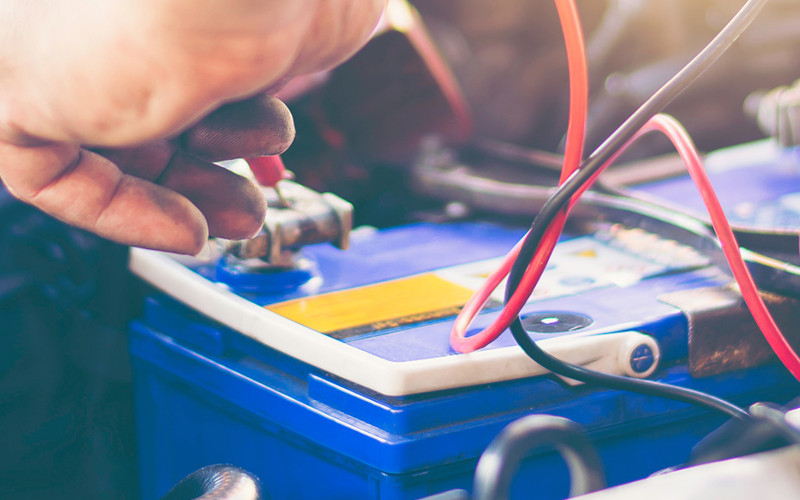Introduction
Understanding the right battery Charging Time is essential for ensuring performance, longevity, and safety. Many users focus only on how long it takes to charge a battery, but in reality, several factors influence this process. From battery chemistry to environmental conditions, charging habits to charger compatibility, each element has a direct impact. At MANLY Battery, we emphasize proper charging practices to help users get the most out of their batteries. This article explores the critical factors that affect battery charging time and why optimizing them is vital for reliable energy storage.
The Role of Battery Chemistry in Charging Time
Lithium-Ion Batteries
Lithium-ion batteries are known for their fast battery charging time compared to other types. Their advanced chemistry allows higher charge acceptance rates, making them a preferred option for electric vehicles, portable devices, and solar storage systems.
LiFePO4 Batteries
LiFePO4 batteries are safer and more stable, with slightly longer battery charging time than typical lithium-ion cells. However, their ability to handle deep cycles and maintain long lifespans makes them ideal for solar, marine, and backup power applications.
Lead-Acid Batteries
Lead-acid batteries take significantly longer to charge. Their battery charging time is extended because of lower efficiency and heat buildup during the absorption phase. They also require maintenance, unlike lithium technologies.
Charging Current and Charger Specifications
The type of charger used has a direct effect on battery charging time. A charger with higher current output can reduce charging hours, but it must match the recommended specifications of the battery to prevent damage. Using an undersized charger increases charging duration, while an oversized one risks overheating and reduced battery life.
Depth of Discharge and Charging Time
The deeper a battery is discharged, the longer its battery charging time will be. For example, a battery discharged to 80% depth will naturally take longer to recharge compared to one only drained by 20%. Managing depth of discharge effectively helps optimize performance and extend lifespan.
Temperature Impact on Charging Efficiency
Temperature plays a vital role in determining battery charging time. Charging at extreme cold or hot conditions slows the chemical reactions inside the cells. Optimal temperatures, usually between 20°C and 25°C, ensure efficient charging without putting stress on the battery. Smart chargers often come with temperature sensors to adjust accordingly.
Battery Size and Capacity Considerations
Larger capacity batteries naturally require longer battery charging time. A 200Ah battery, for example, will take more hours to recharge than a 50Ah battery if both use the same charger. Users should always match charger capacity with battery size to ensure efficient and safe charging cycles.
State of Charge at Start
A partially charged battery will have shorter battery charging time compared to a fully depleted one. Knowing the initial state of charge is crucial in estimating how long charging will take, which is why calculators and monitoring tools are important for accuracy.
Charger Technology and Charging Stages
Fast Charging vs. Standard Charging
Fast charging reduces battery charging time but may introduce extra heat and stress to the battery if not properly managed. Standard charging, while slower, is safer and extends battery health.
Charging Stages in Lithium and Lead-Acid Batteries
Most modern batteries follow a multi-stage charging process: bulk, absorption, and float. Each stage has different effects on battery charging time, especially for lead-acid batteries where absorption can be prolonged.
Maintenance and Battery Condition
Old or poorly maintained batteries usually have extended battery charging time. As internal resistance builds up, they take longer to absorb charge. Keeping batteries well-maintained ensures consistent performance and efficient recharging.
Environmental and Usage Factors
Humidity, ventilation, and operating environment also impact battery charging time. Batteries stored in poorly ventilated areas may heat up, reducing charging efficiency. Similarly, frequent deep discharges and improper storage increase overall recharge times.
Conclusion
The battery charging time depends on multiple interconnected factors, including chemistry, capacity, charger specifications, discharge depth, and environmental conditions. By understanding and optimizing these aspects, users can significantly improve performance, efficiency, and battery life. At MANLY Battery, we provide expert solutions and reliable calculators to help you manage your battery charging time effectively.
FAQs
1. Why do lithium batteries have shorter charging time than lead-acid?
Lithium batteries charge faster because they have higher efficiency and can accept higher current without damage.
2. Does temperature affect battery charging time?
Yes, extreme heat or cold slows charging efficiency and can increase charging time significantly.
3. Can using a larger charger reduce charging time?
Yes, but the charger must be compatible with the battery’s rated specifications to avoid damage.
4. Why does depth of discharge matter in charging time?
The deeper the discharge, the longer the battery will take to recharge fully.
5. How can I reduce my battery charging time?
Use the correct charger, avoid deep discharges, maintain proper temperature conditions, and choose the right battery chemistry for your application.



